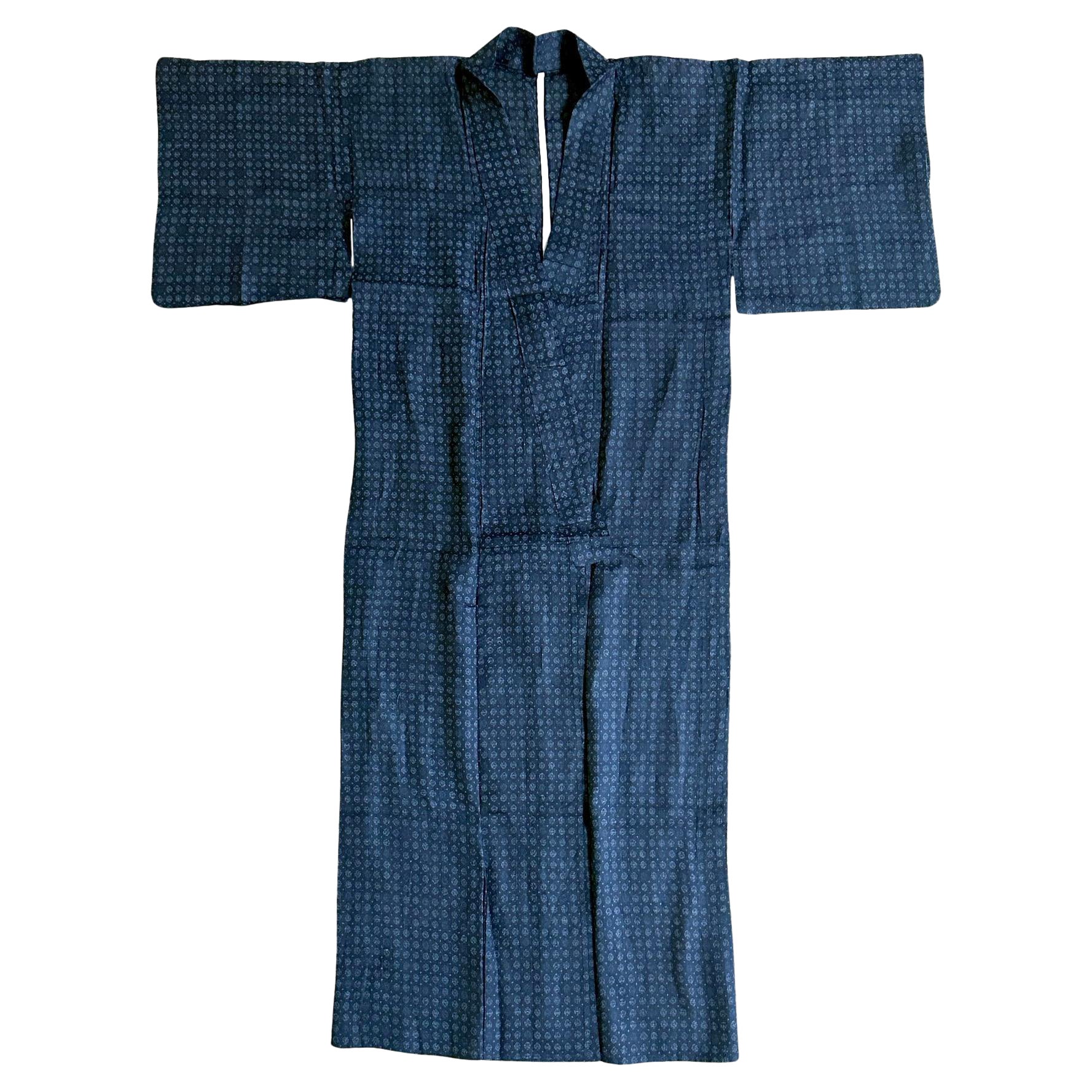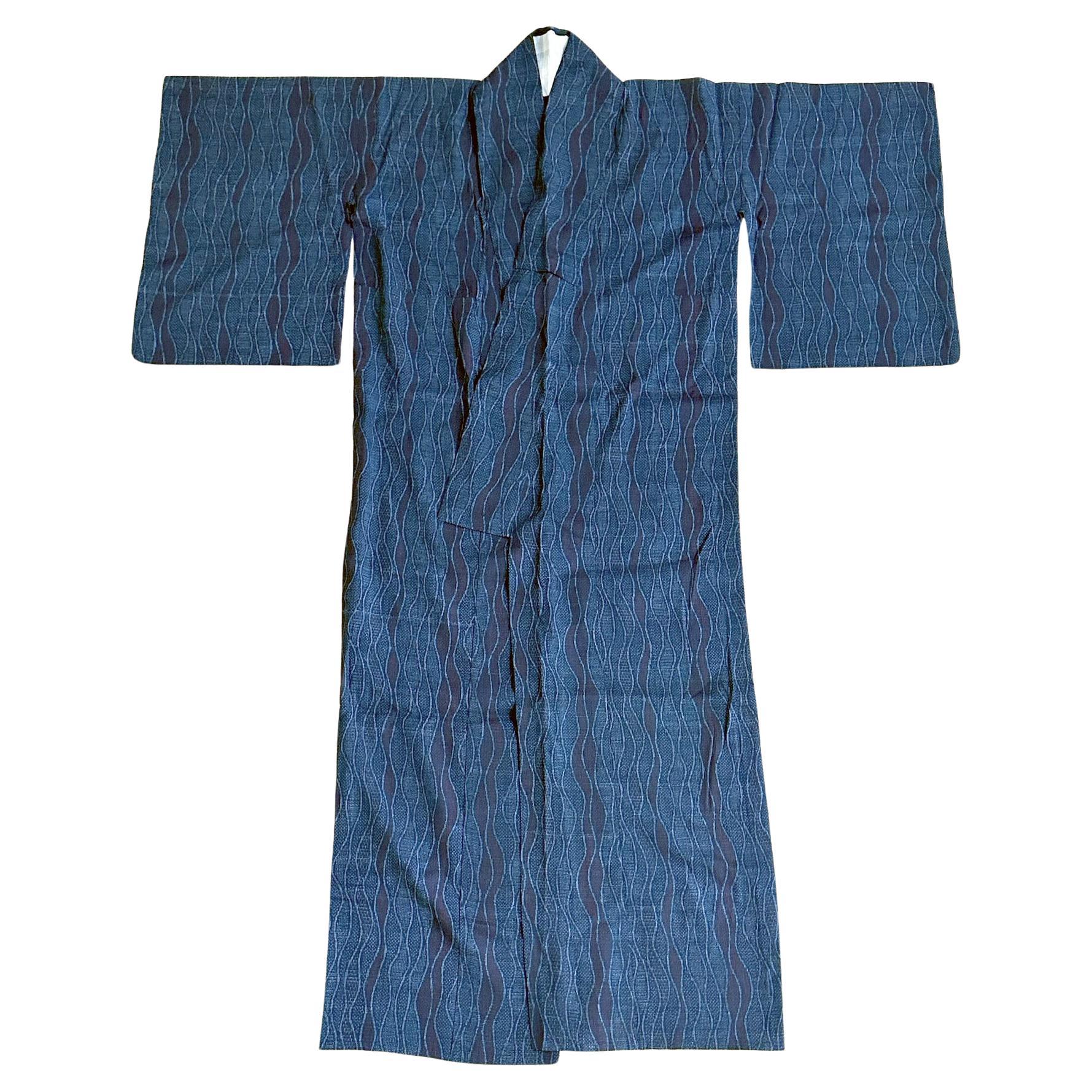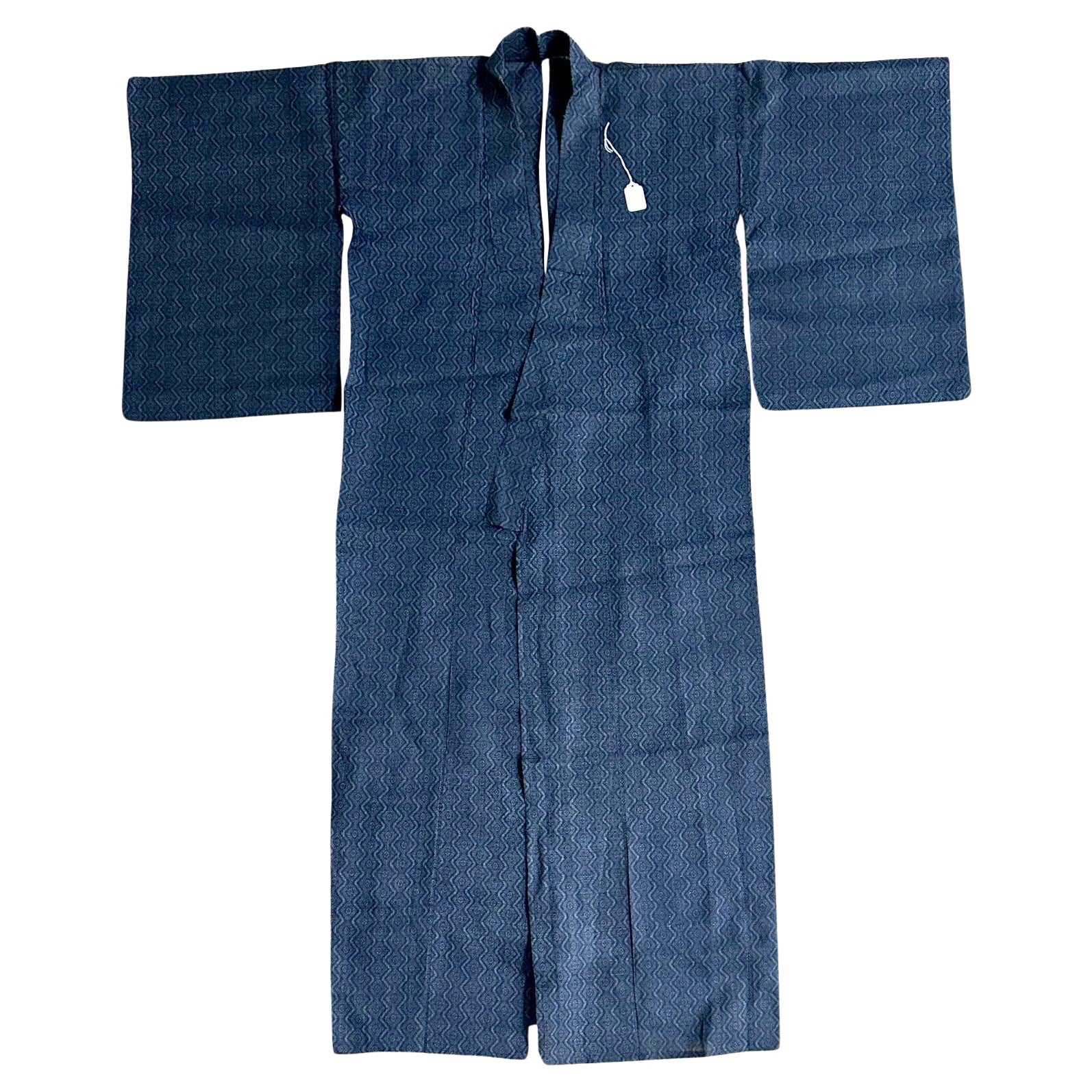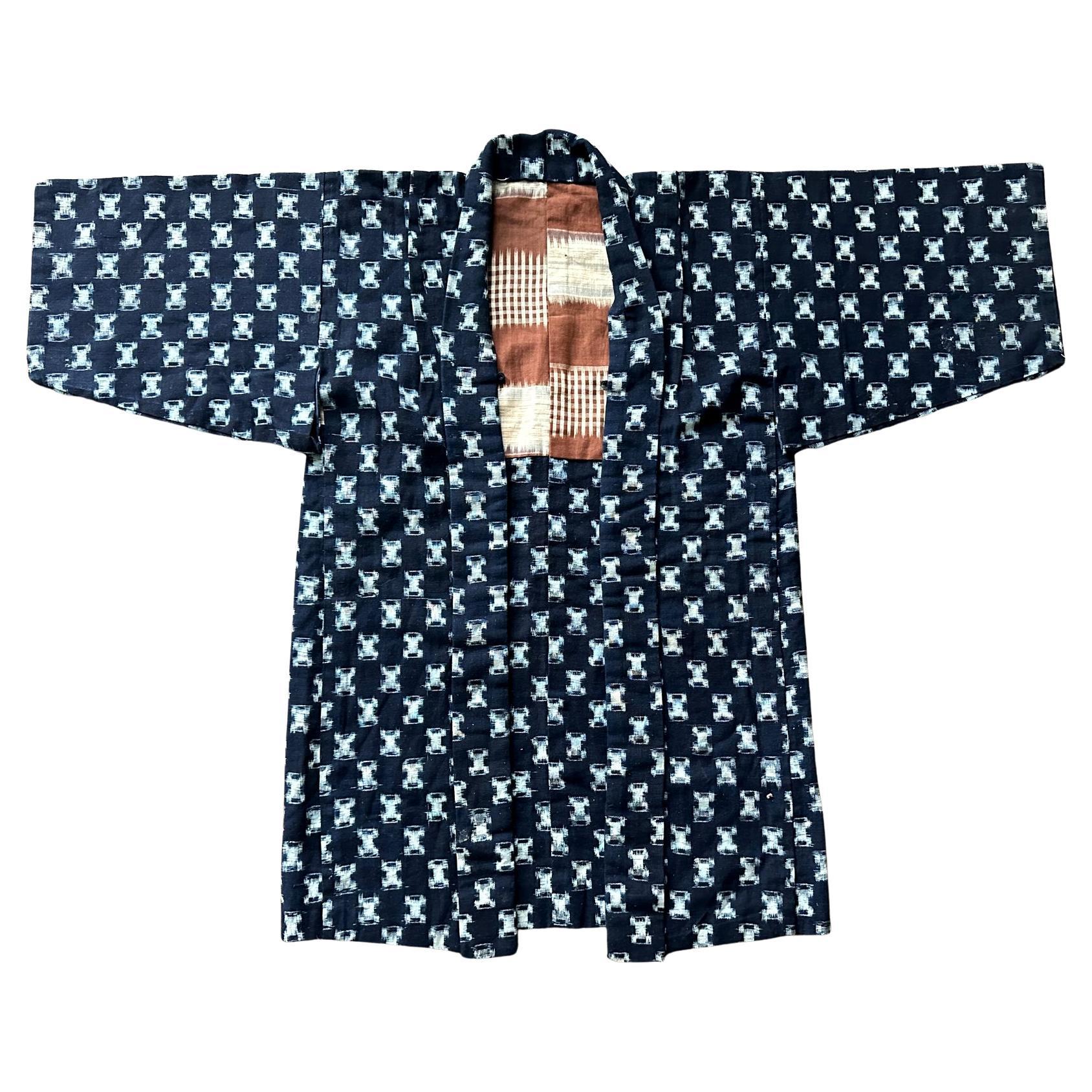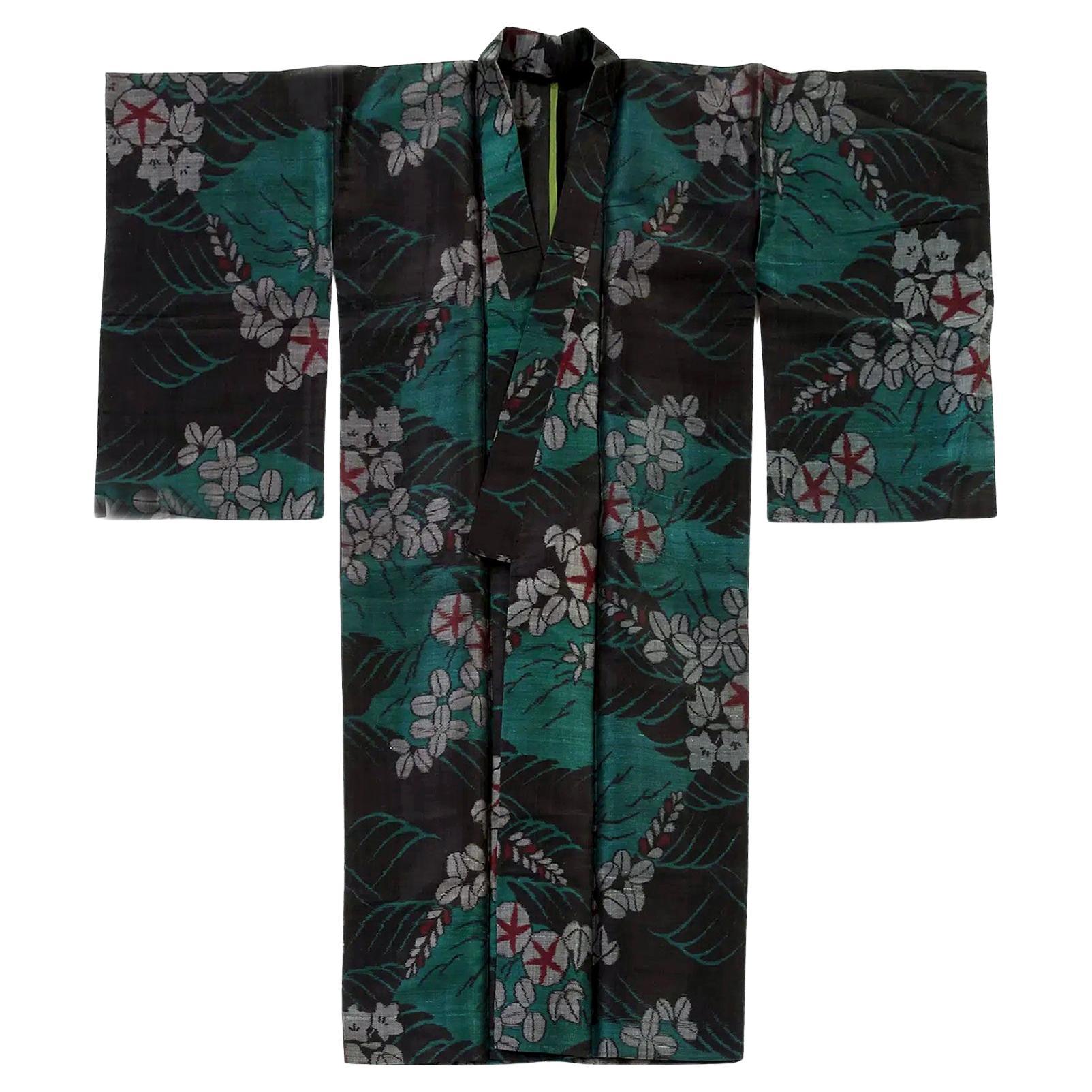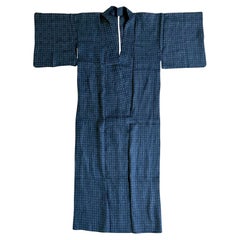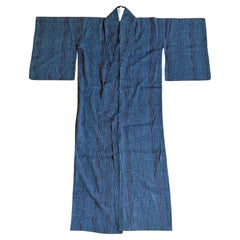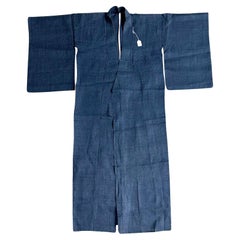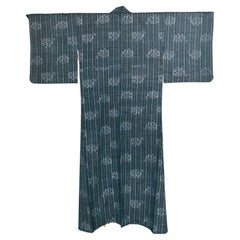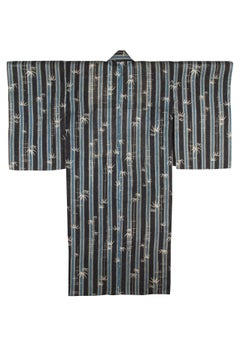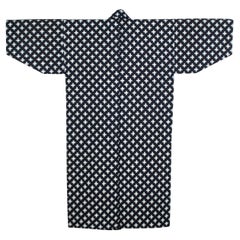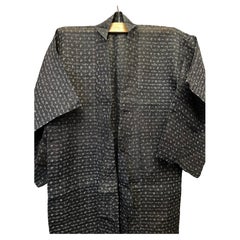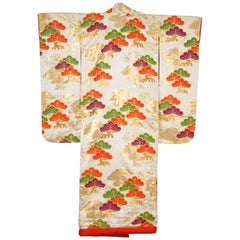Items Similar to Japanese Woven Ikat and Stenciled Summer Usumono Kimono Meiji Period
Want more images or videos?
Request additional images or videos from the seller
1 of 10
Japanese Woven Ikat and Stenciled Summer Usumono Kimono Meiji Period
$1,600per set
£1,214.04per set
€1,388.15per set
CA$2,234.77per set
A$2,484.76per set
CHF 1,297.40per set
MX$30,245.53per set
NOK 16,554.29per set
SEK 15,510.58per set
DKK 10,360.02per set
Shipping
Retrieving quote...The 1stDibs Promise:
Authenticity Guarantee,
Money-Back Guarantee,
24-Hour Cancellation
About the Item
On offer is a “Natsu No Kimono” (summer kimono) also called “Usumono" (thin clothes) dated from late Meiji Period circa late 19th to early 20th century. This well-preserved garment was tailored from a woven indigo blue fabric with fine ikat design. The thin fabric was a type of linen/hemp that is almost seen through against the light, allowing great ventilation in hot summer days. On the indigo background, a white geometrical threaded pattern in warp-ikat design were woven into the fabric. A further design was added by stencil resistant dying (known in Japanese as Katazome). Repetition of small motifs of floral and leaves in lighter blue color was left permeating the entire surface. The two types of techniques complemented each other nicely, creating a complex, contrasting yet subdued textile. The sleeves are short and there are vents under both arms. The kimono appears partially lined around the neck area, but the lining has since been removed at some point. The thin fabric was kept in fine condition free of odor or noticeable stains or discoloration.
Ikat weaving was originated in Southeast Asia and spread to Japan Mainland in the 17th century via Okinawa (14th century). The cotton production accelerated the development of the textile industry on a much larger scale by then in the Edo period when Kasuri weaving became very popular among the general population.
- Dimensions:Height: 55 in (139.7 cm)Width: 45 in (114.3 cm)Depth: 0.5 in (1.27 cm)
- Sold As:Set of 2
- Style:Meiji (Of the Period)
- Materials and Techniques:Linen,Ikat
- Place of Origin:
- Period:
- Date of Manufacture:Early 20th Century
- Condition:Wear consistent with age and use. Overall good condition as a well-preserved example. No odors, stains or discoloration.
- Seller Location:Atlanta, GA
- Reference Number:1stDibs: LU945043434252
About the Seller
4.9
Platinum Seller
Premium sellers with a 4.7+ rating and 24-hour response times
Established in 2006
1stDibs seller since 2010
564 sales on 1stDibs
Typical response time: <1 hour
- ShippingRetrieving quote...Shipping from: Atlanta, GA
- Return Policy
Authenticity Guarantee
In the unlikely event there’s an issue with an item’s authenticity, contact us within 1 year for a full refund. DetailsMoney-Back Guarantee
If your item is not as described, is damaged in transit, or does not arrive, contact us within 7 days for a full refund. Details24-Hour Cancellation
You have a 24-hour grace period in which to reconsider your purchase, with no questions asked.Vetted Professional Sellers
Our world-class sellers must adhere to strict standards for service and quality, maintaining the integrity of our listings.Price-Match Guarantee
If you find that a seller listed the same item for a lower price elsewhere, we’ll match it.Trusted Global Delivery
Our best-in-class carrier network provides specialized shipping options worldwide, including custom delivery.More From This Seller
View AllJapanese Woven Asa Double Ikat Summer Usumono Kimono Provenance
Located in Atlanta, GA
On offer is a “Natsu No Kimono” (summer kimono) also called “Usumono" (thin clothes) dated from early 20th century Taisho Period. This well-preserved garment was tailored from a wove...
Category
Early 20th Century Japanese Taisho Textiles
Materials
Hemp
Japanese Woven Asa Double Ikat Summer Usumono Kimono Provenance
Located in Atlanta, GA
A “Natsu No Kimono” (summer kimono) also called “Usumono" (thin clothes) dated from early 20th century Taisho Period. This well-preserved garment was tailored from a woven indigo blu...
Category
Early 20th Century Japanese Taisho Textiles
Materials
Linen
Japanese Woven Asa Double Ikat Summer Usumono Kimono Provenance
Located in Atlanta, GA
A “Natsu No Kimono” (summer kimono) also called “Usumono" (thin clothes) dated from early 20th century Taisho Period. This well-preserved garment was tailored from a woven indigo blu...
Category
Early 20th Century Japanese Taisho Textiles
Materials
Hemp
Japanese Woven Linen Kimono with Katazome Stencil Dyes
Located in Atlanta, GA
On offer is a Japanese summer kimono woven from indigo blue linen with ivory color fine stripes patterns with apparently darker weft additions. The elega...
Category
Early 20th Century Japanese Japonisme Textiles
Materials
Linen
Rare Japanese Woven Ikat Child Kimono Nemaki
Located in Atlanta, GA
A rare and well preserved Japanese woven child's kimono circa early 20th century (end of Meiji period). The small kimono was a great example of Nemaki (...
Category
Early 20th Century Japanese Meiji Textiles
Materials
Cotton
Exceptional Japanese Summer Asa Hitoe Weft Ikat Kimono Provenance
Located in Atlanta, GA
A super fine Japanese summer unlined (Hitoe) Kimono made with a soft Asa fiber blended with silk. The garment was hand-stitched and dated to circa 1930-50s Showa period. It is hard t...
Category
Mid-20th Century Japanese Showa Textiles
Materials
Linen, Silk
You May Also Like
Taisho-Early Showa Period Japanese Stencil-Dyed Summer Kimono with Bamboo Motif
Located in Point Richmond, CA
Taisho-Early Showa period Japanese Stencil-Dyed Summer Kimono with bamboo Motif
A light-weight summer kimono woven of both cotton and silk, and patter...
Category
Mid-20th Century Japanese Taisho Textiles
Materials
Cotton, Silk
Antique Japanese Indigo-Dyed Double Ikat Kimono
Located in Point Richmond, CA
Antique Japanese Indigo-Dyed Double Ikat Kimono
This deeply saturated indigo-dyed kimono is made of heavy-weight hand-spun cotton and precisely patter...
Category
Early 20th Century Japanese Taisho Tribal Art
Materials
Cotton
Japanese Cotton Kimono IKAT Kasuri 1970s Showa
Located in Paris, FR
This is a kimono made in Japan called kasuri. This kasuri kimono was made around 1970s.
It was used to wear by some peasants to work. This is made with cotton Ikat.
Dimensions:
Heig...
Category
Vintage 1970s Japanese Showa Antiquities
Materials
Cotton
Vintage Kimono Silk Brocade Japanese Ceremonial 1970
Located in North Hollywood, CA
A vintage Mid-Century ivory color silk brocade collectable Japanese ceremonial kimono. One of a kind.
Fabulous museum quality ceremonial kimono in pure silk with intricate detailed h...
Category
20th Century Japanese Japonisme Textiles
Materials
Silk
Late Meiji Period Sleeping Kimono / Yogi, Japan
Located in Point Richmond, CA
Late Meiji Period sleeping Kimono / Yogi, Japan
Yogi are a type of oversized sleeping kimono traditionally used in Japan. This kimono would have b...
Category
Early 20th Century Japanese Tribal Textiles
Materials
Cotton
Rare Antique Japanese Oversized Sleeping Kimono (Yogi)
Located in Point Richmond, CA
Rare Antique Japanese Oversized Sleeping Kimono (Yogi)
This is the outer shell of a type of shaped sleeping kimono known as a yogi. Yogi were in more common use during the Edo and M...
Category
Antique Late 19th Century Japanese Meiji Tribal Art
Materials
Cotton, Linen
More Ways To Browse
Textile Art Weaving
Woven Fabric Art
Ikat Fabrics
Antique Fabrics And Textiles Fabric Textiles
Japanese Linen
Dior Asia
Antique Stencils
Large Scale Textile Art
Japanese Weaving
Antique Furniture Stencils
Antique Ikat
White Kimono
Blue Kimono
Ikat Weavings
Japanese Lighter
Japanese Kimono Fabric
Dior Lighter
Japanese Indigo Textile
